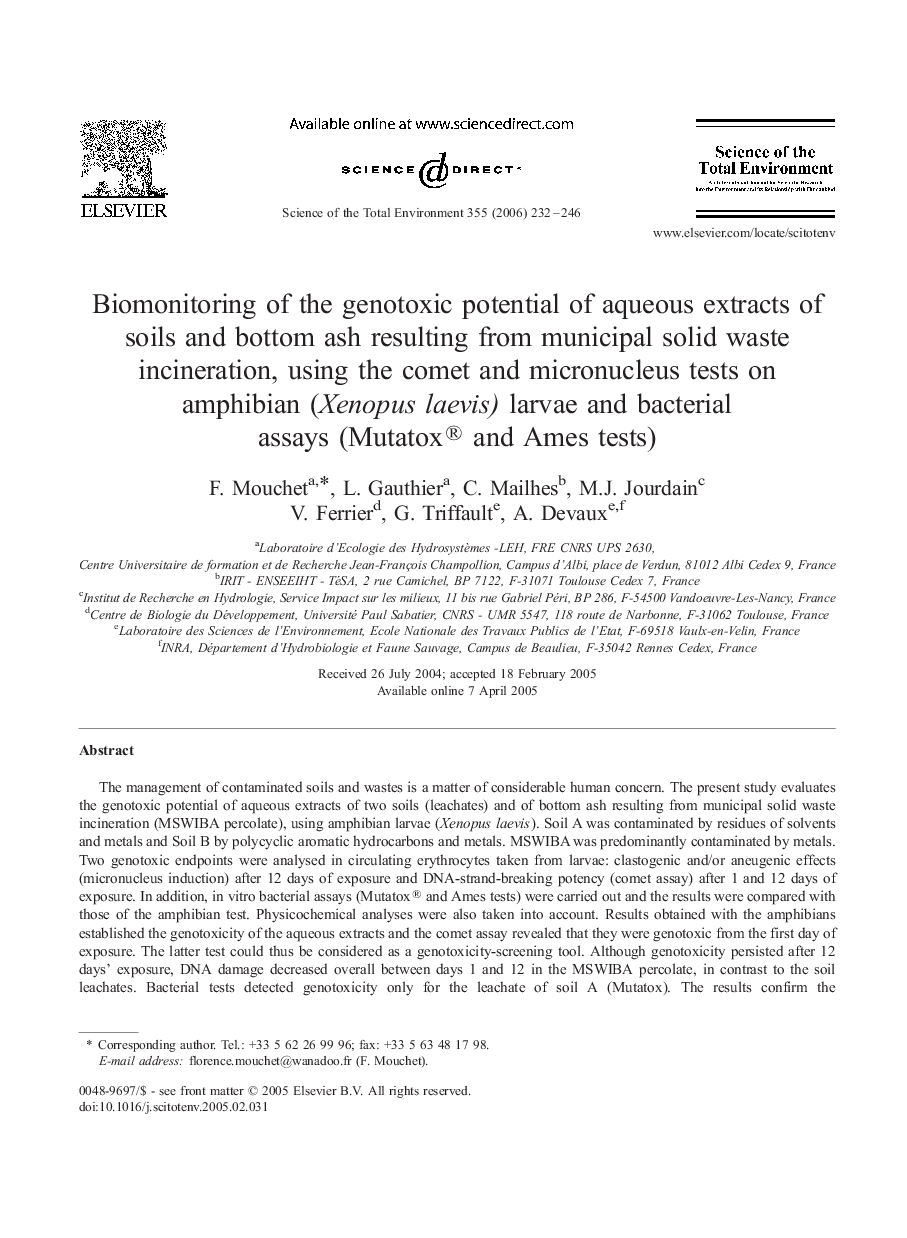| Article ID | Journal | Published Year | Pages | File Type |
|---|---|---|---|---|
| 4434391 | Science of The Total Environment | 2006 | 15 Pages |
The management of contaminated soils and wastes is a matter of considerable human concern. The present study evaluates the genotoxic potential of aqueous extracts of two soils (leachates) and of bottom ash resulting from municipal solid waste incineration (MSWIBA percolate), using amphibian larvae (Xenopus laevis). Soil A was contaminated by residues of solvents and metals and Soil B by polycyclic aromatic hydrocarbons and metals. MSWIBA was predominantly contaminated by metals. Two genotoxic endpoints were analysed in circulating erythrocytes taken from larvae: clastogenic and/or aneugenic effects (micronucleus induction) after 12 days of exposure and DNA-strand-breaking potency (comet assay) after 1 and 12 days of exposure. In addition, in vitro bacterial assays (Mutatox® and Ames tests) were carried out and the results were compared with those of the amphibian test. Physicochemical analyses were also taken into account. Results obtained with the amphibians established the genotoxicity of the aqueous extracts and the comet assay revealed that they were genotoxic from the first day of exposure. The latter test could thus be considered as a genotoxicity-screening tool. Although genotoxicity persisted after 12 days' exposure, DNA damage decreased overall between days 1 and 12 in the MSWIBA percolate, in contrast to the soil leachates. Bacterial tests detected genotoxicity only for the leachate of soil A (Mutatox). The results confirm the ecotoxicological relevance of the amphibian model and underscore the importance of bioassays, as a complement to physico-chemical data, for risk evaluation.
